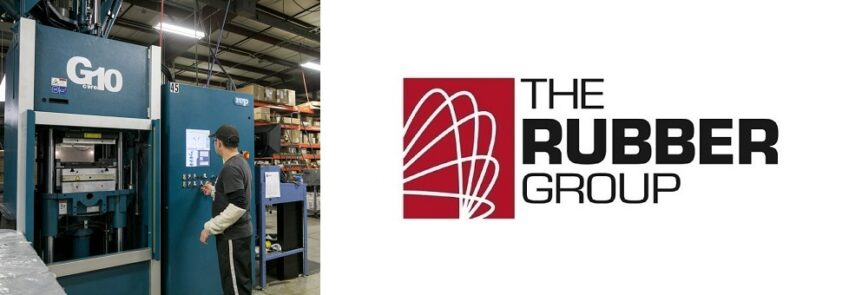Rubber molding processes uses heat and pressure to mold raw rubber into the specific shape and size of a desired part. Examples of molded rubber products include seals, gaskets, O-rings, tubing, and bellows – just to name a few. Today, there are three main types of rubber molding processes: compression molding, transfer molding, and injection molding. Each has its own advantages and applications.
This article from The Rubber Group explains the differences between all three rubber molding methods. Keep reading to find out which process you need, or request a quote if you’re ready to order standard or custom molded rubber products. The Rubber Group offers all three processes at our Rochester, New Hampshire (USA) location and we’re ISO 9001:2015 certified and ITAR registered.
#1 Compression Molding
Compression molding is the oldest, most basic, and most cost-effective rubber molding process. It begins by placing a pre-measured amount of raw rubber into a mold cavity. This pre-measured amount, the pre-form, is compressed under high pressure and heat until the rubber fills the entire cavity. The pressure and heat cause the rubber to flow and take on the shape of the mold while it cures.
Compression molding is best suited for producing simple shapes and low to medium volumes of rubber products such as seals, gaskets, and simple O-rings. The process is relatively simple, and it requires less machinery than either transfer or injection molding. All of this makes compression molding a popular choice for prototyping and small-scale production.
#2 Transfer Molding
Transfer molding is more complex than compression molding but less complex than injection molding. With transfer molding, raw rubber material is heated in a chamber. As the press closes, the material is transferred to a mold cavity through a sprue or channel. The mold is then closed and compressed, and the rubber cures in the cavity.
Transfer molding is best suited for producing complex shapes and higher volumes of rubber products. Often, it’s used to produce electrical connectors, diaphragms, and O-rings with intricate designs. Because it allows for precise control over the amount of material in the mold, transfer molding creates a higher-quality product. It also minimizes material waste and reduces the need for post-production trimming.
#3 Injection Molding
Injection molding is the most advanced and the most precise rubber molding process. It’s also highly automated, which allows for faster production times and lower costs. Injection molding involves melting the raw rubber material in a heated barrel and then injecting it into a closed mold cavity under high pressure. The pressure and heat cause the rubber to flow and take on the shape of the mold.
Rubber injection molding is best suited for producing high volumes of parts that have complex shapes and tight tolerances. Often, it’s used with seals, O-rings, and gaskets for automotive and aerospace applications. The injection molding process allows for precise control over the amount of material injected into the mold, resulting in high-quality finished products with minimal post-production trimming required.
The Rubber Group Offers All Three Rubber Molding Processes
As you’ve learned, each rubber molding process has its own advantages and applications. Compression molding is ideal for producing simple shapes and low to medium volumes of rubber products, while transfer molding is best suited for producing complex shapes and higher volumes. Injection molding is recommended for producing complex shapes with tight tolerances and in high volumes.
Ultimately, the right rubber molding process depends on the complexity of your product, the desired production volume, and cost considerations. The Rubber Group can help you to compare all three rubber molding processes. We also perform thorough engineering design reviews and can offer you help with rubber material selection.
Do you need standard or custom-molded rubber products? Contact us

